RD-V: 0210 Yeoh Hyperelastic Material
A one element model in tension used as a test model and compare with analytical results.
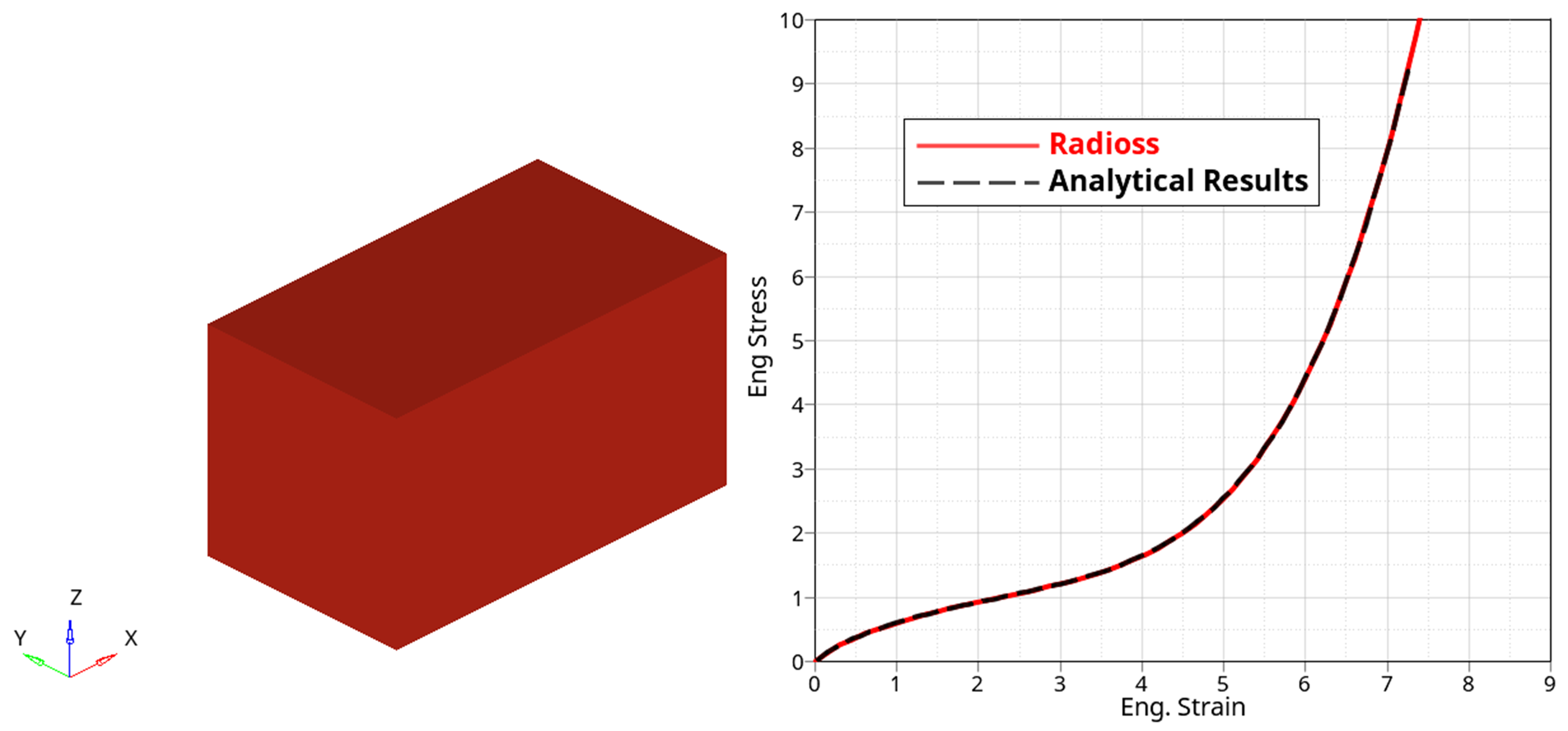
The Yeoh model can be used to describe nearly impressible hyperelastic materials, like rubber. Set Yeoh parameter with LAW94 and compare one element tension Radioss results with analytical results.
Options and Keywords Used
/MAT/LAW94 (YEOH)
Input Files
Model Description
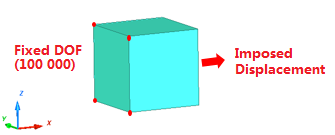
Units: mm, s, Mg, N, MPa
Properties: /PROP/SOLID with, Isolid=24, Ismstr=10, and Icpre=1
Simulation Iterations
- Yeoh theory:
The Yeoh energy density is:
This example assumes an incompressible ( ) hyperelastic material, then the strain energy density of Yeoh simplified, as:
With
Where,- Deviatoric stretch with and .
- The stretch in principal direction 1, 2, 3.
- Engineer strain in principal direction I.
It shows only three parameters need to be defined for the (incompressible) Yeoh model.
Uniaxial test is used in this example, then:
and
The Cauchy stress of Yeoh model is computed as:
In the uniaxial test, the Cauchy stress (true stress) in principal direction 1 is:
The engineer stress is:
In this example, three material parameters are defined below:Figure 3. Engineer stress-strain curve 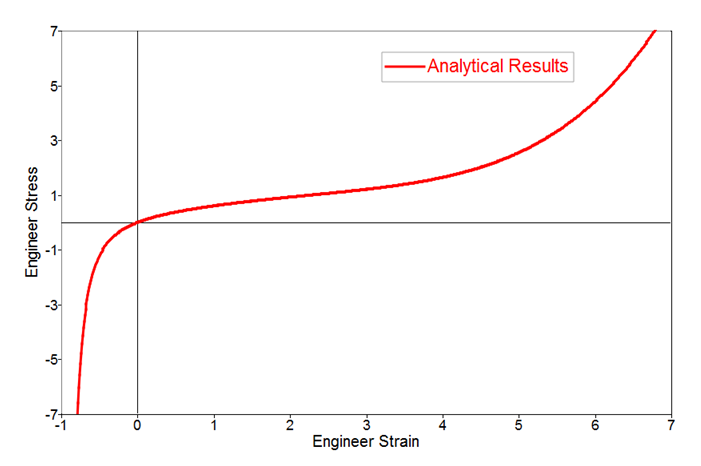
- LAW94:
The hyperelastic model uses polynomial model and the Yeoh model is one of the polynomial model with only three parameters. In this example, viscous was not considered.
Results
In LAW94 Yeoh model, three parameters defined same as analytical case.
D1 needs to be defined in the material card. If D1 is not defined in LAW94, then the default Poisson’s ratio 0.495 is used.
Then 1/D1=17.94 is printed in the Starter output file.
This can be checked as follows:
C10 . . . . . . . . . . . . . . . . . . .= 0.1800000000000
C01 . . . . . . . . . . . . . . . . . . .= 0.000000000000
C20 . . . . . . . . . . . . . . . . . . .=-2.0000000000000E-03
C11 . . . . . . . . . . . . . . . . . . .= 0.000000000000
C02 . . . . . . . . . . . . . . . . . . .= 0.000000000000
C30 . . . . . . . . . . . . . . . . . . .= 5.0000000000000E-05
C21 . . . . . . . . . . . . . . . . . . .= 0.000000000000
C12 . . . . . . . . . . . . . . . . . . .= 0.000000000000
C03 . . . . . . . . . . . . . . . . . . .= 0.000000000000
1/D1 . . . . . . . . . . . . . . . . . .= 17.94001716615
1/D2 . . . . . . . . . . . . . . . . . .= 0.000000000000
1/D3 . . . . . . . . . . . . . . . . . .= 0.000000000000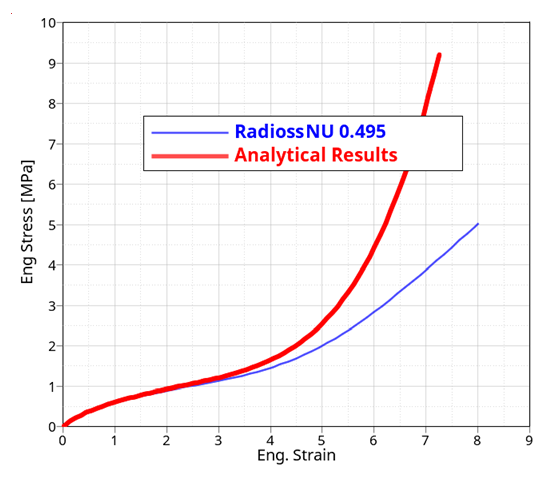
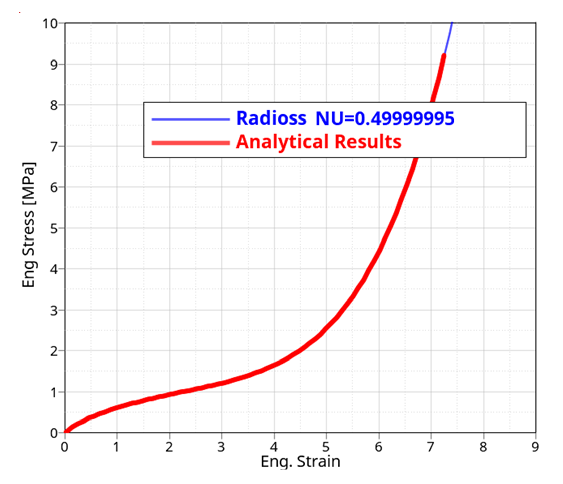
Since material incompressible is assumed in analytical calculation., Poisson’s ratio closer to 0.5 is better, but the computation time will increase. Just one element tension model from to run time is more than 20 times increased. In this example, use ; therefore, set D1=0.003334.